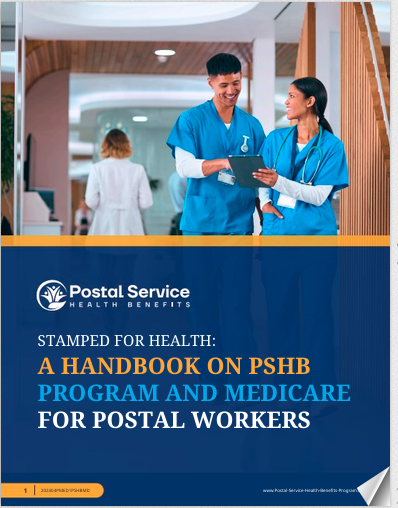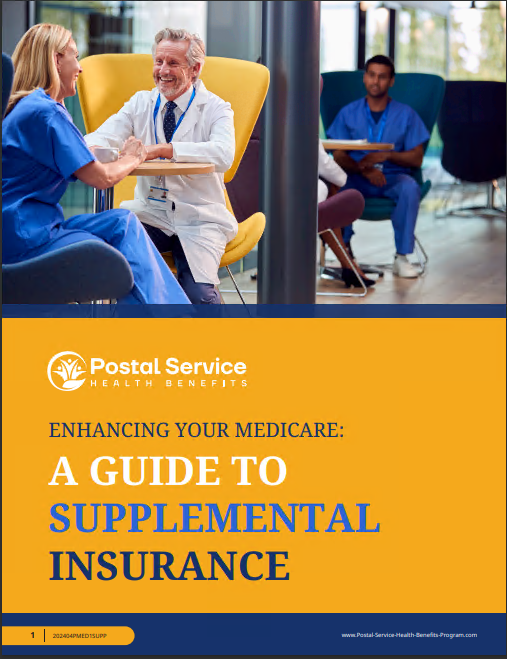Key Takeaways
-
Copayments under the Postal Service Health Benefits (PSHB) program appear simple, but they can vary depending on plan rules, provider networks, and services received.
-
Unexpected variations in copayment amounts often come from emergency visits, out-of-network services, or layered cost-sharing with coinsurance and deductibles.
Copayments Under PSHB: What They Promise Versus What You Get
At first glance, copayments under your Postal Service Health Benefits (PSHB) plan seem straightforward. A fixed dollar amount for a doctor’s visit, a specialist consultation, or a prescription refill. The idea is that you should be able to budget for healthcare with a degree of certainty.
But here in 2025, many enrollees are finding that reality doesn’t always match the expectation. What starts as a predictable cost can quickly shift based on when, where, and how you receive care. And that unpredictability often leads to confusion, frustration, and unexpected out-of-pocket costs.
The Basic Structure: Fixed Fees With Hidden Variability
In-network providers usually come with clearly defined copayments. These fees might include:
-
Primary care visit: Often in the $20–$40 range
-
Specialist care: Typically higher, around $30–$60
-
Urgent care: Ranges from $50 to $75
-
Emergency room services: From $100 up to $150 or more
These numbers are just ranges. Each PSHB plan has its own cost structure, and some include coinsurance or deductibles even after a copayment is made. That’s where predictability breaks down.
When Copayments Stop Being Predictable
1. Out-of-Network Surprises
If you accidentally see a provider outside your plan’s network—or are referred to one without realizing it—your fixed copayment may no longer apply. Instead, you could be on the hook for:
-
A higher out-of-network copayment (if one exists)
-
Coinsurance instead of a copayment (e.g., 40–50% of the bill)
-
Full charges until your out-of-network deductible is met
Many PSHB enrollees assume a copayment is all they need to pay, but that only holds true within network boundaries.
2. Emergency Visits That Don’t End There
Emergency room visits often come with the highest copayments in your PSHB plan. But the copayment doesn’t usually include additional services provided during that visit, such as:
-
Diagnostic imaging (like CT scans)
-
Specialist consultations
-
Hospital admission
Once admitted, your cost-sharing might shift entirely—from a flat copayment to coinsurance, and from there into deductible territory.
3. Diagnostic and Preventive Services
Some services are supposed to be covered with no copayment, like routine preventive screenings. However, the moment a visit becomes diagnostic or is coded as something other than preventive, copayments and coinsurance can apply. For instance:
-
A screening colonoscopy may be no-cost.
-
If a polyp is found and removed, the procedure can become diagnostic.
The result? A surprise copayment—or worse, a charge that bypasses copayment altogether and instead uses coinsurance.
How Deductibles Interfere With Copayment Assumptions
PSHB plans often combine deductibles with copayments, especially for services beyond primary and preventive care. In 2025, you’ll see in-network deductibles between $350 and $500 for low-deductible plans, or up to $2,000 for high-deductible plans. Out-of-network deductibles can range from $1,000 to $3,000.
When a deductible applies, your copayment might not count toward your out-of-pocket maximum—or worse, may not apply until the deductible is met. This leaves many enrollees paying full price for services they expected to be covered with a simple copayment.
Pharmacy Copayments: Small Fees That Add Up Quickly
Most PSHB plans use tiered pharmacy copayments. Here’s a general outline:
-
Tier 1 (generics): Lowest copayment
-
Tier 2 (preferred brands): Moderate copayment
-
Tier 3 (non-preferred brands): Higher copayment
-
Tier 4 or specialty medications: Highest out-of-pocket costs
You may think you’re saving by paying a small amount per prescription. But if you’re managing chronic conditions, copayments can stack up across multiple medications. Without realizing it, you could spend several hundred dollars a year—just in routine pharmacy copayments.
And in 2025, even with the Medicare Part D out-of-pocket cap of $2,000 in place for eligible retirees, those not yet eligible for Medicare Part D or who are under 65 still face significant variability in drug pricing under PSHB plans.
Multiple Services, Multiple Copayments
During one medical visit, you might receive more than one service. If your provider bills these separately, your plan could charge you multiple copayments for:
-
The office visit itself
-
Lab work or imaging
-
Procedures done during the same appointment
This layering can make a single appointment much more expensive than anticipated, and it often isn’t explained clearly at the time of service.
Annual Out-of-Pocket Maximums: Not a Magic Shield
Every PSHB plan includes a maximum out-of-pocket limit. In 2025, these caps are typically:
-
$7,500 for Self Only (in-network)
-
$15,000 for Self Plus One and Self & Family (in-network)
Out-of-network costs may not count toward these limits, and neither do non-covered services. While the caps protect you from catastrophic costs, reaching them still means you’ve paid thousands in copayments, coinsurance, and deductibles.
Many enrollees never hit the cap but still feel financial strain throughout the year—because even moderate copayments can feel unpredictable when they pop up repeatedly.
What You Can Do to Minimize Copayment Shock
Know Your Plan Details
Each PSHB plan has a brochure that outlines:
-
Copayment amounts by service type
-
Network provider requirements
-
Whether coinsurance applies alongside or instead of copayments
-
Services that trigger deductible requirements
Review these documents thoroughly during each Open Season or after a Qualifying Life Event (QLE).
Use In-Network Providers Whenever Possible
Always confirm provider network status before scheduling care. Many surprises result from unknowingly visiting out-of-network providers, especially:
-
Specialists
-
Labs and imaging centers
-
Emergency facilities
Understand How Your Pharmacy Benefits Are Structured
Ask your plan or pharmacist about preferred medications. Choosing generics or preferred brands can significantly reduce cumulative pharmacy copayments.
Ask for Billing Clarification
Before you leave a provider’s office, ask:
-
Will I be charged more than one copayment?
-
Will this visit be considered preventive or diagnostic?
-
Will any of these services be subject to coinsurance or a deductible?
This helps set realistic cost expectations—and sometimes lets you make lower-cost choices.
Track Your Expenses Over the Year
Small copayments can feel harmless in isolation, but keeping a running total will give you a better sense of your actual out-of-pocket burden. This helps:
-
Prepare for potential cost spikes
-
Choose the right plan next Open Season
-
Avoid unnecessary services or repeat visits when possible
Why Copayment Clarity Matters Now More Than Ever
In 2025, as the PSHB system continues to evolve after its transition from fehb, understanding your cost-sharing responsibilities is more important than ever. While the program offers significant benefits, you still need to stay alert to the fine print.
Copayments that feel predictable on paper often come with real-world variables. The more you know about what affects your costs, the better prepared you’ll be to manage your healthcare budget without surprises.
Talk to a Licensed Agent Before Your Next Bill Becomes a Mystery
You don’t have to decode copayment rules on your own. If you’re unsure about your PSHB plan’s cost-sharing structure—or you’re considering changes during Open Season—now’s the time to get clarity.
A licensed agent listed on this website can help you:
-
Compare plan copayments, deductibles, and coinsurance
-
Understand what services will cost you in real terms
-
Make confident healthcare choices that align with your budget
Don’t wait until your next bill raises questions you weren’t ready to ask.







